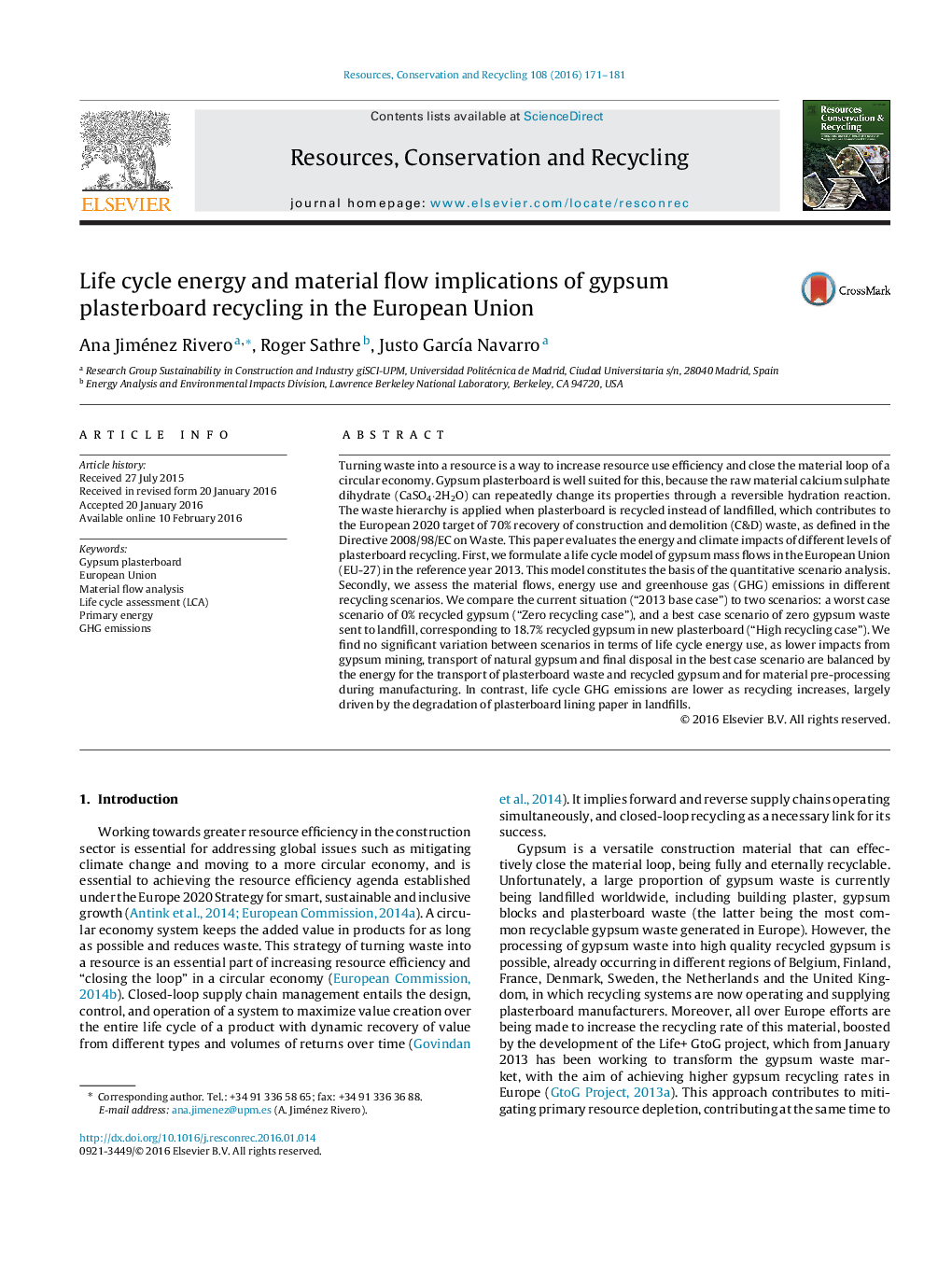| کد مقاله | کد نشریه | سال انتشار | مقاله انگلیسی | نسخه تمام متن |
|---|---|---|---|---|
| 1062723 | 1485683 | 2016 | 11 صفحه PDF | دانلود رایگان |
• Gypsum is fully recyclable, changing form based on a reversible hydration reaction.
• A life cycle model is developed of gypsum plasterboard in the EU-27.
• Relations between gypsum recycling, energy use and GHG emissions are established.
• Gypsum plasterboard recycling can contribute to achieving EU resource-efficiency targets.
Turning waste into a resource is a way to increase resource use efficiency and close the material loop of a circular economy. Gypsum plasterboard is well suited for this, because the raw material calcium sulphate dihydrate (CaSO4·2H2O) can repeatedly change its properties through a reversible hydration reaction. The waste hierarchy is applied when plasterboard is recycled instead of landfilled, which contributes to the European 2020 target of 70% recovery of construction and demolition (C&D) waste, as defined in the Directive 2008/98/EC on Waste. This paper evaluates the energy and climate impacts of different levels of plasterboard recycling. First, we formulate a life cycle model of gypsum mass flows in the European Union (EU-27) in the reference year 2013. This model constitutes the basis of the quantitative scenario analysis. Secondly, we assess the material flows, energy use and greenhouse gas (GHG) emissions in different recycling scenarios. We compare the current situation (“2013 base case”) to two scenarios: a worst case scenario of 0% recycled gypsum (“Zero recycling case”), and a best case scenario of zero gypsum waste sent to landfill, corresponding to 18.7% recycled gypsum in new plasterboard (“High recycling case”). We find no significant variation between scenarios in terms of life cycle energy use, as lower impacts from gypsum mining, transport of natural gypsum and final disposal in the best case scenario are balanced by the energy for the transport of plasterboard waste and recycled gypsum and for material pre-processing during manufacturing. In contrast, life cycle GHG emissions are lower as recycling increases, largely driven by the degradation of plasterboard lining paper in landfills.
Journal: Resources, Conservation and Recycling - Volume 108, March–April 2016, Pages 171–181
